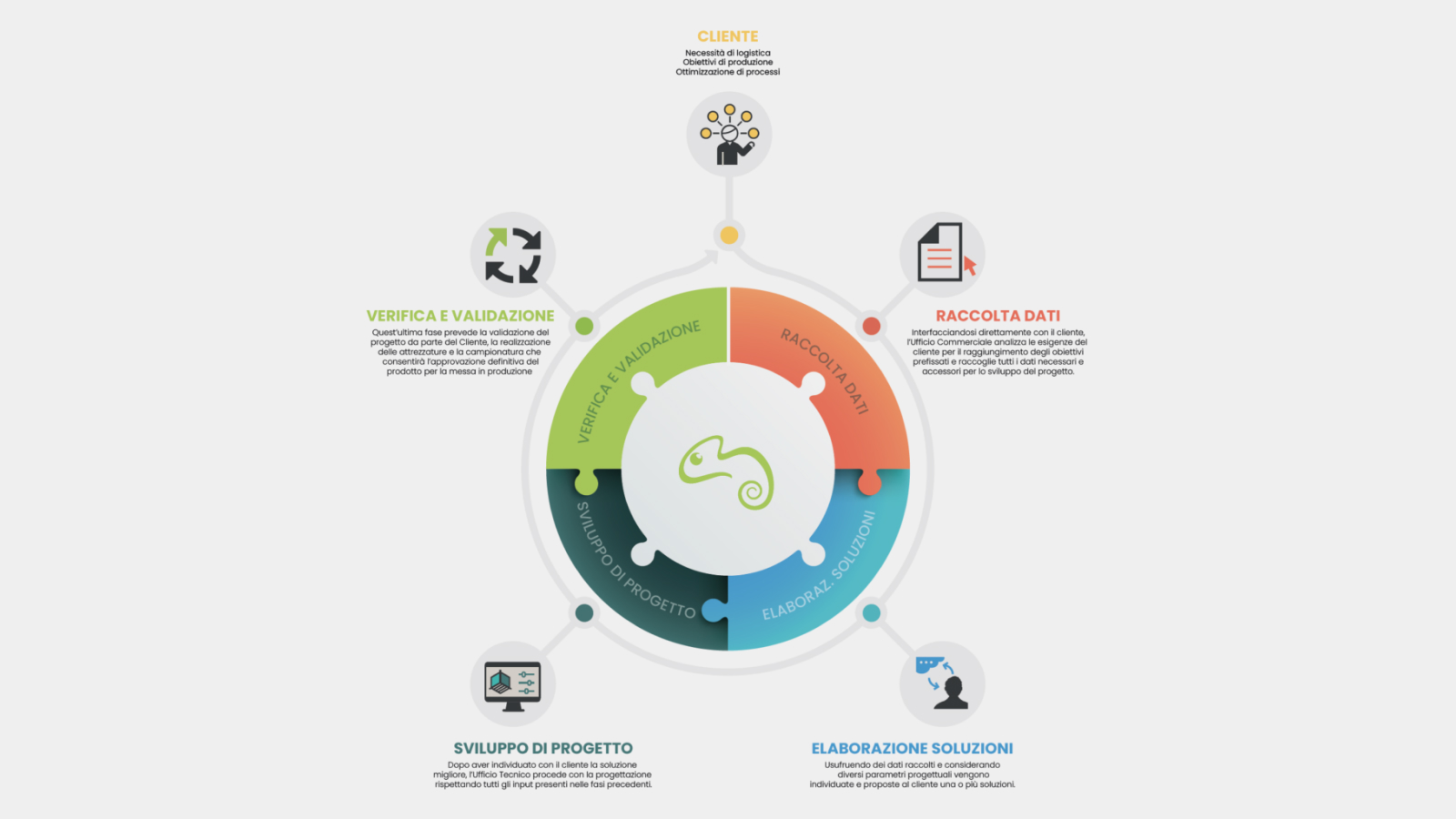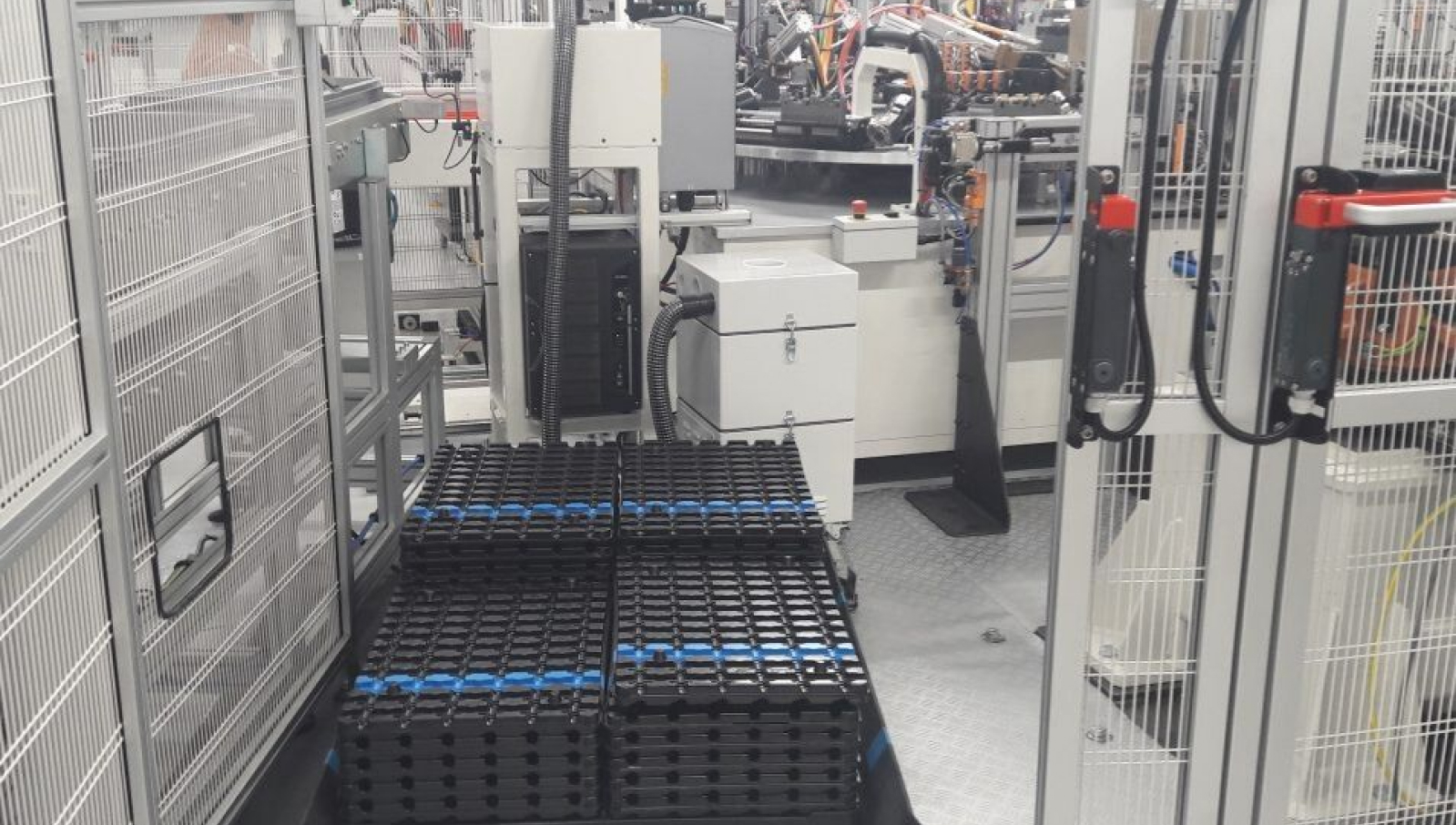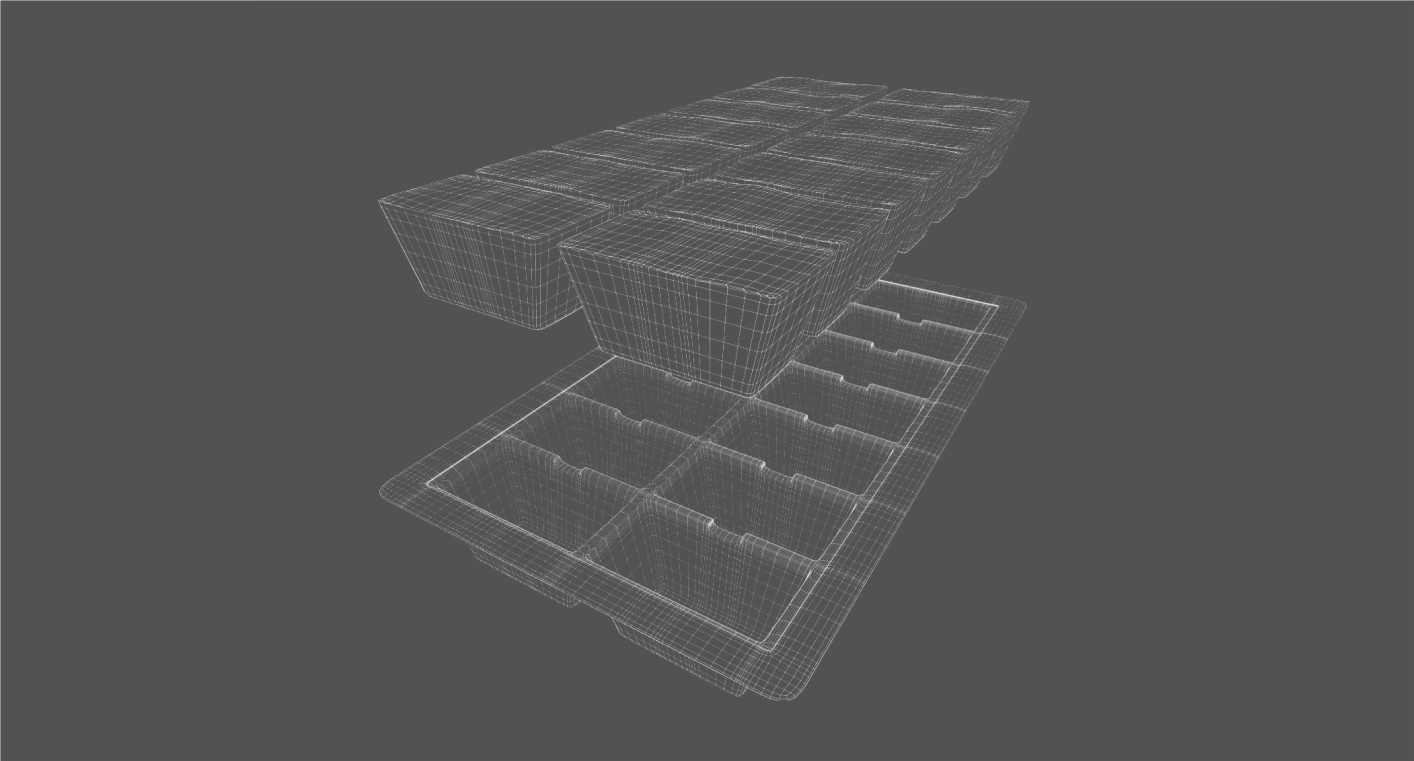Integrated industrial logistics is not a single process at the end of the cycle, but an integral part of the design of a product that must deal with the entire organizational system of the company, incorporated in all the operational areas involved in the value chain.

Ellepack designs and manufactures trays with different construction and performance characteristics in terms of usage and final destination. All types of trays are modular and customizable in the shape to adapt perfectly to the components to be handled. Ellepack’s answers to handling needs come from in-depth analyses and the long experience gained in the thermoforming sector for the industry.
Each tray is the result of a careful and extremely targeted process aimed at achieving efficient and effective industrial solutions adaptable to a very wide range of needs, both in integrated logistics and in packaging
The analysis and research process develops in 4 phases
- Data collection, information and feasibility analysis: preliminary phase necessary to allow an in-depth analysis of the logistical and packaging needs expressed by the customer. This phase involves focusing on the primary needs of the customer and analyzing the objectives to be achieved.
- Elaboration of solutions and choice of the best one: central phase of the process that involves the study of the global characteristics of the project that emerged during the interviews with the customer and the selection of the technical solution that allows the best results in the presence of a valid cost/benefit ratio.
- Project development: in this phase, the technicians are responsible for designing and developing the solution by producing renderings and 3D drawings that allow the customer to carry out a first fundamental check.
- Project validation: this last phase involves prototyping (optional) and sampling which, after the tests carried out by the customer with the assistance of Ellepack technicians, will allow the final approval of the project and start-up.
The complexity of the adequate solution to the customer’s needs, as well as the need to submit the project in a perfectly understandable form, has led us to develop a design of thermoforming products using an MCAD solid modeler.
The presentation of projects that faithfully reproduce the product which is being created in virtual reality allows you to minimize errors in evaluation and changes due to adaptation. Often we are also able to avoid the creation of the prototype or in any case to avoid continuous adjustments of the prototype due to the inadequacy of the project or the changing needs of the customer.
The result is a mathematical model of the thermoforming product containing all the available know-how, which prevents as much as possible the generation of printing or result problems (thinning, crests, shrinkage, breakage, etc.). The model will be submitted to the customer for approval before proceeding with any design of the equipment.
An accurate virtual design allows us to develop shapes that are perfectly suited to contain the customer’s objects, as well as to create extremely precise and long-lasting products. The changes that may become necessary between prototyping and production or for subsequent productions, changing the customer’s needs, are easy to implement without having to start all the work from the beginning.
Conception of a custom tray
Accurate planning
The technical office is activated whenever requests require a technical or design assessment. Project planning is managed within the Project Management System and kept updated by the technical staff.
It is divided into several phases:
- Opening of the project with definition of start and end dates according to the deadlines agreed with the customer;
- Definition of individual development activities with relative timing estimate (task);
- Gantt chart for the work progress (updated with the % of progress);
- Assignment of tasks to individual resources with relative timing estimate (issue)
Product design involves the following drawing process:
- Thermoformed product
- Mold
- Cutting die
- Counter-mold (where necessary)
- Accessory equipment (frames, cooled plate, stacker, etc.)
A team effort
The technical and commercial staff analyze the customer’s request and define the main technical characteristics of the product, keeping in mind the best solution in terms of the relationship between suitability for the required use and sustainable costs.
The technical staff develops the product project, starting from the characteristics collected from appropriate modules and integrating additional information necessary for product optimization by interfacing with the customer. The design will take into account all the critical issues encountered in the past on similar products.
Once the prototype and solution are ready, the technical staff monitors the performance and acknowledges the indications coming from the on-field customer in order to constantly improve yield and performance.
The monitoring process continues over time, with periodic checks aimed at evaluating solutions that take into account the evolution of the customer’s processes and production layout.






